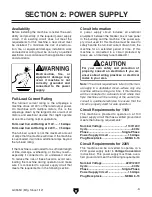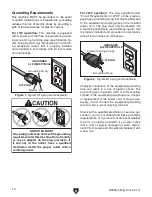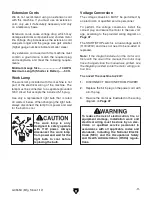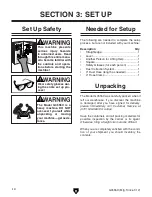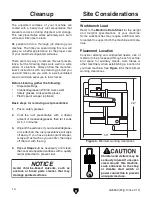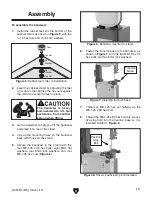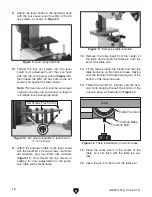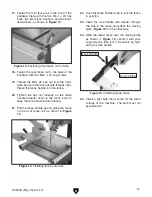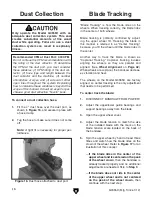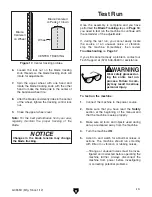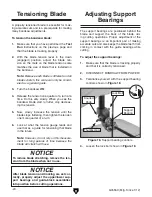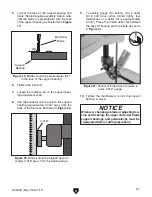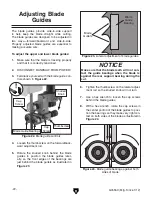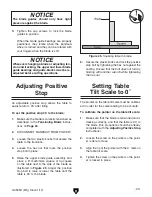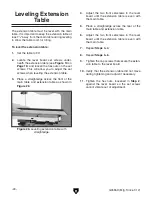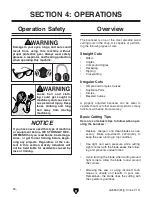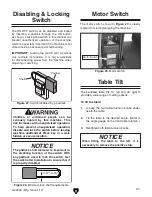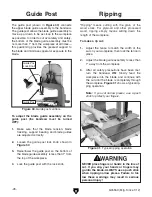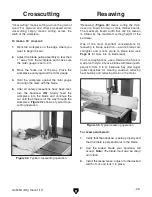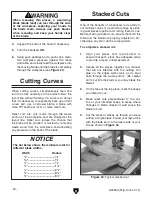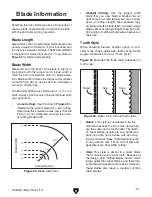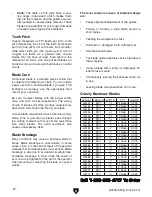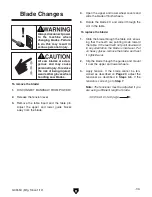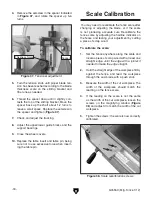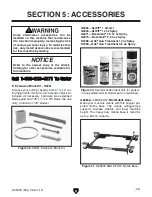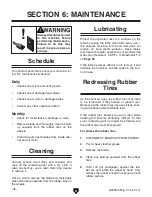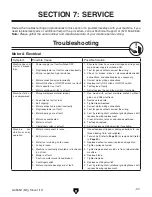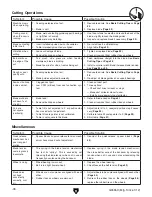
g0555X
(Mfg. since 1/12)
-23-
NOTICE
Whenever changing a blade or adjusting ten-
sion and tracking, the upper and lower blade
guide bearings and guide-blocks must be re-
adjusted before cutting operations.
NOTICE
The blade guides should only have light
pressure against the blade.
9. tighten the cap screws to lock the blade
guides in position.
When the blade guide bearings are properly
positioned, they rotate when the bandsaw
wheel is turned and they can be rotated with
your fingers when the blade is still.
figure 25. squaring table to blade.
6. secure the plastic knobs and lock the positive
stop bolt by tightening the hex nut against the
casting.
Ensure that the bolt does not turn by
holding with another wrench while tightening
the hex nut.
an adjustable positive stop allows the table to
easily return to 90˚ after tilting.
To set the positive stop 90˚ to the blade:
1. Make sure the blade is correctly tensioned as
described in the
Tensioning Blade instruc-
tions on
page 20.
2. disConneCt bandsaW FroM poWer!
3. loosen the two plastic knobs that secure the
table to the trunnions.
4. loosen the hex nut that locks the positive
stop bolt in place.
5. raise the upper blade guide assembly and
place a 6" machinist’s square or try-square
on the table next to the side of the blade as
illustrated in
figure 25. adjust the positive
stop bolt to raise or lower the table until the
table is 90˚ to the blade.
Adjusting positive
Stop
the pointer on the table tilt scale must be calibrat-
ed in order for the scale reading to be accurate.
To calibrate the pointer on the table tilt scale:
1. Make sure that the blade is tensioned and is
tracking correctly, and that the table is 90˚ to
the blade (this procedure should be already
completed with the
Adjusting positive Stop
instructions).
2. loosen the screw on the pointer so the point-
er is able to move.
3. align the tip of the pointer with the 0˚ mark on
the table tilt scale.
4. tighten the screw on the pointer so the point-
er is locked in place.
Setting Table
Tilt Scale to 0˚

